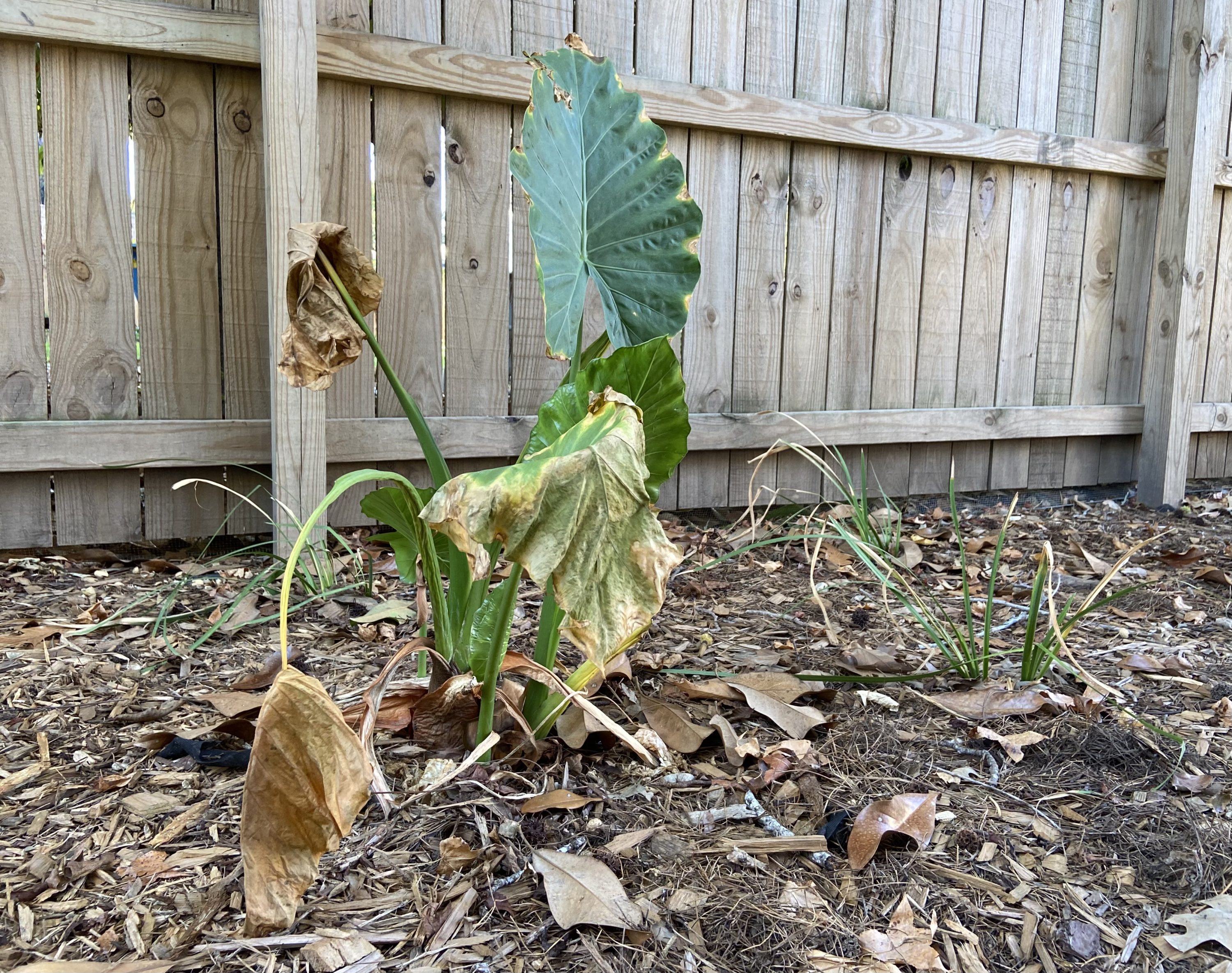
Lafourche Parish School District recognizes students with Perfect Scores of 850 on LEAP 2025
October 7, 2023
$1 Million Powerball Ticket sold in Houma
October 8, 2023By Heather Kirk-Ballard LSU AgCenter Horticulturist
Persistent drought conditions in Louisiana are raising concerns among homeowners and gardeners statewide. Along the coast, a troubling development is saltwater intrusion. This phenomenon is marked by the infiltration of saltwater into the Mississippi River, resulting in the formation of a saltwater wedge.
Essentially, this wedge is a dense saltwater intrusion that advances upstream from the river’s mouth, creating a wedge-like formation along the riverbed. The higher salinity of this saltwater makes it denser than freshwater, giving rise to this physical wedge as it extends into the Gulf.

This summer’s drought has been tough on plants such as these elephant ears and Louisiana irises. There is now concern about salt intrusion in the water supply. Photo by Olivia McClure/LSU AgCenter
As the drought continues, saltwater is predicted to hit the water supply in coastal areas including St. Bernard, Orleans and Jefferson parishes in late October. Upriver parishes may see effects later in the fall.
Should gardeners be concerned, and what can they do about increased salt in irrigation water?
There are concerns that excessive salt in the water can build up in the soil over time, but there is no need to panic. Salt exhibits high mobility and is easily washed out of the soil with each rainfall, making it a temporary concern rather than a long-term problem.
Excessive salt levels in the soil or in irrigation water can stress plants. The high salinity can disrupt the balance of water and nutrients within the plant, making it more difficult for plants to absorb water and nutrients. This can decrease growth, reduce flower and fruit production and have negative effects on the overall health of the plant.
Excessive salt can inhibit root growth and development because the salt-stressed roots become less efficient at absorbing water and nutrients, making plants more susceptible to drought stress and nutrient deficiencies.
Continued exposure to high salt levels can lead to soil degradation. Salts can disperse soil particles, reduce soil porosity and impair soil structure. Over time, this can make it increasingly difficult to grow a variety of plants in the affected soil.
Stressed plants are more vulnerable to pests and diseases, as they have fewer resources to defend themselves. Salt-affected plants may attract a greater number of garden pests and be more susceptible to diseases.
Symptoms of salt toxicity in plants include leaf damage such as browning, withering, stunting, twig dieback, reduced or distorted leaf or stem growth and the development of crispy leaf edges. This not only causes aesthetic damage but can negatively affect the yield and quality of flowers, fruits, vegetables and the overall vigor of the plant.
Some steps home gardeners can take is to use freshwater sources such a collected rainwater whenever possible. Stop the use of commercial fertilizers that often contain high levels of salt. Flush excess salts from the root zone when freshwater is available to do so.
Flushing, or what is referred to as leaching the soil, involves applying large amounts of freshwater to the soil to dissolve and wash away accumulated salts.
Not all plants are equally sensitive to salt. Some plants are highly salt tolerant while others are more sensitive and can be negatively affected by even low levels of salt in the soil or irrigation water. Plant sensitivity to salt varies widely based on the species and their individual adaptations. Take note of those that do well and those that do not, as this could potentially be a problem again in the future as we continue to face fluctuations in climate and precipitation patterns.
To protect plants from saltwater exposure, gardeners should use freshwater sources for irrigation whenever possible, regularly monitor soil salinity levels, implement appropriate leaching practices, choose salt-tolerant plant varieties and take proactive measures to maintain soil health and structure. Understanding and addressing salt-related concerns is crucial for maintaining healthy and vibrant garden landscapes.






